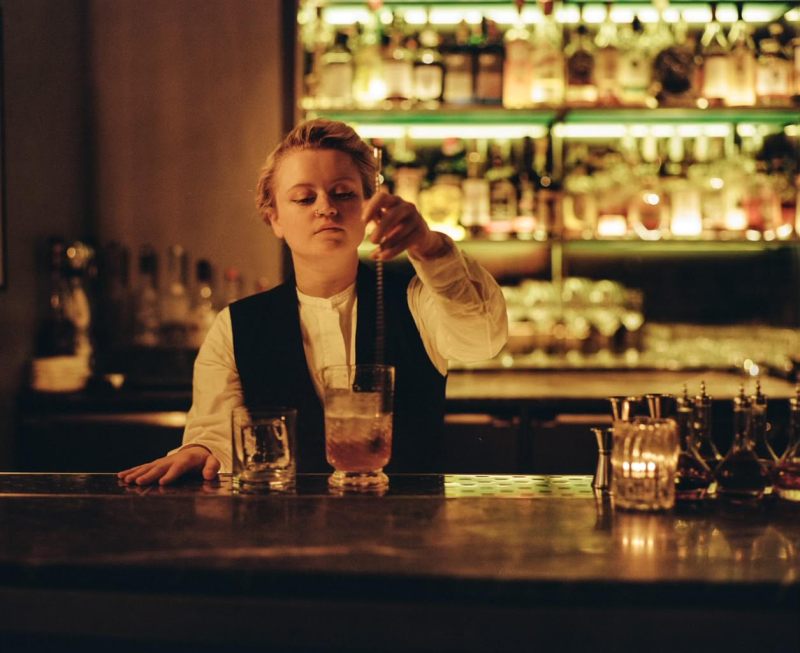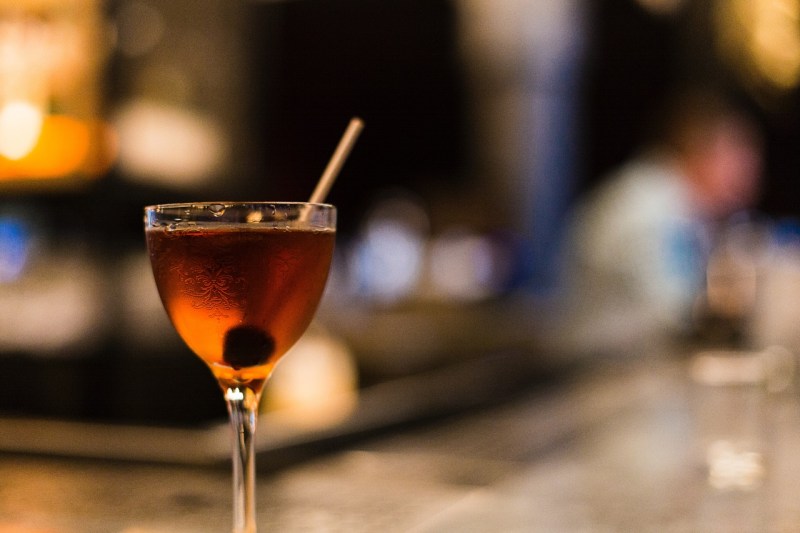
One of the world’s most ubiquitous cocktails, the Manhattan cocktail has been enjoyed by spiritous imbibers since it was made famous at the legendary Manhattan Club in New York City sometime around 1880. Even while falling in and out of fashion throughout the years, Manhattan has withstood the test of time to firmly cement itself as one of the great classic cocktails of all time.
As with many classic cocktails, the origin of the Manhattan drink recipe is murky at best. The most popular theory is that the drink was invented by Dr. Iain Marshall at a party for Lady Randolph Churchill, mother of Winston Churchill, held at the Manhattan Club. Sounds plausible, but this story never happened. It was later verified that Lady Churchill was never partying it up in New York at that time as she was pregnant at home in England. What is for sure is that the Manhattan emerged on the scene in the 1880s. The earliest known mention of both the name and the Manhattan cocktail ingredients was in September 1882 in the Sunday Morning Herald in Olean, N.Y.
The evolution of the Manhattan cocktail recipe throughout history is quite interesting as well. Even the list of what’s in a Manhattan has evolved, from different types of measurement to different whiskey and bitters to the addition (and later removal of) several other spirits and modifiers. O.H. Byron’s book The Modern Bartender’s Guide, printed in 1884, contained two versions of how to make a Manhattan:
- 1 pony French vermouth
- 1/2 pony whiskey
- 3-4 dashes Angostura bitters
- 3 dashes gum syrup
The second version:
- 1 wine glass whiskey
- 1 wine glass Italian vermouth
- 2 dashes Angostura bitters
- 2 dashes Curaçao
In Harry Johnson’s Bartender’s Manual from 1900, the Manhattan ingredients further morph:
- 1/2 wine glass whiskey
- 1/2 wine glass vermouth
- 1 dash Curaçao or absinthe
- 1-2 dashes orange bitters
- 1-2 dashes gum syrup
Throughout the years following, the answer to the question of what is a Manhattan drink continued to change. Curaçao and absinthe were removed, Angostura began to be called more often due to its greater availability, and curiously Canadian whiskey was the preferred base, most likely because it was much more plentiful during Prohibition than American-made bourbon.
Classic Manhattan recipe

Ingredients:
- 2 ounces rye whiskey
- 1 ounce sweet vermouth
- 4 dashes of Angostura bitters
- 1 dash of orange bitters
Method:
- Add all ingredients to a mixing glass.
- Add ice and stir for 15-20 seconds.
- Strain into a chilled coupe glass.
- Express and discard an orange twist.
- Garnish with a brandied cherry.
The Manhattan’s combination of rye whiskey, sweet vermouth, and aromatic bitters is as timeless as it is delicious. Simple and elegant, this most classic of cocktails spawned many variations over the years, such as the Rob Roy, Brooklyn, and Red Hook. The ratio used for the Manhattan is one of the easiest to experiment with to find something new and exciting. Try splitting the base between two different spirits, such as rye whiskey and calvados, and splitting the vermouth with an amari. You can even try smoking the finished cocktail! The possibilities are endless.
Before you make your Manhattan, there are a few things to consider, namely the choices of rye and vermouth. When choosing your rye, look for options with a high-rye mash bill for the added spiciness, and always go for whiskeys that are at least 100 proof. The higher the proof, the stronger the flavor. Our suggestions for great rye for a Manhattan would be Wild Turkey 101, Rittenhouse, or Old Overholt Bottled in Bond.
As far as sweet vermouth goes, we always recommend vermouths from Dolin, but if you want a heavier style, reach for Carpano Antica. Lastly, Angostura is the essential aromatic bitter, but there are also other high-quality
How to make a ‘Perfect’ Manhattan

Note the quotation marks around “perfect” in the title of this section. We’re not saying we can improve on the classic Manhattan cocktail, that recipe is pretty much perfection in a glass. In this case, the word “perfect” is a mixology term meaning that the vermouth in the recipe has been evenly split between sweet and dry, bringing more complex and varied flavors to the drink. Once you master the classic Manhattan cocktail recipe, give the “perfect” version a try, and you’ll be glad you did.
(Recipe from Liquor.com)
Ingredients:
- 2 ounces rye whiskey
- 1/2 ounce dry vermouth
- 1/2 ounce sweet vermouth
- 2 dashes of Angostura bitters
- Cherry or lemon twist for garnish
Method:
- Add the rye whiskey, dry and sweet vermouth, and the bitters into a mixing glass filled with ice.
- Stir until it’s well chilled.
- Strain into a chilled cocktail glass.
- Garnish with the cherry or lemon twist.


